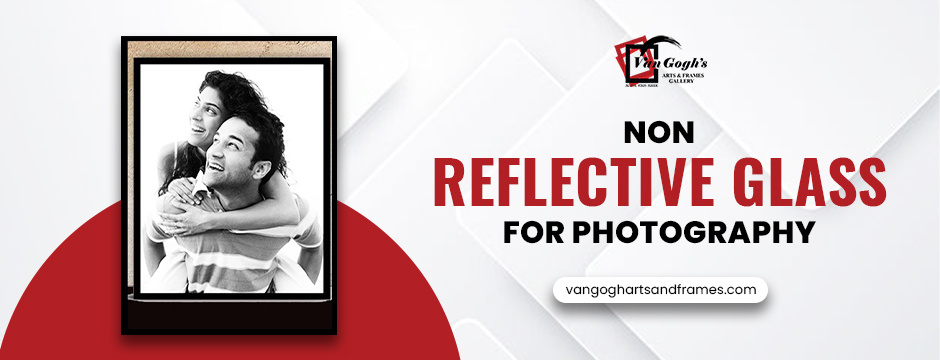Artworks are more than just decorative pieces—they are a reflection of culture, history, and emotion. Whether it’s a priceless painting by a master artist or a cherished family photograph, art carries stories worth preserving for generations. But what many art enthusiasts, collectors, and even casual decorators often overlook is that light—particularly ultraviolet (UV) light—can silently damage artworks over time.
Exposure to UV rays can lead to fading, discolouration, and the breakdown of delicate pigments and materials. These effects may not be immediately visible, but they gradually compromise the vibrancy and structural integrity of the piece. Museums, galleries, and professional framers have long understood this threat, which is why they rely on specialised solutions like museum-quality glass with UV protection. In this blog, we’ll explore why UV protection matters, how museum quality glass works, and why it is essential for preserving the beauty of art over time.
Understanding UV Damage in Art
Ultraviolet radiation is invisible to the human eye, but its impact on art is very real. When artworks are exposed to natural sunlight or even certain artificial lighting, UV rays interact with organic materials such as paper, canvas, textiles, and pigments. This leads to photochemical reactions that degrade the artwork. Some common effects include:
- Fading Colours: Vibrant pigments gradually lose intensity. Reds, blues, and yellows are especially vulnerable.
- Yellowing of Paper: Photographs, prints, and works on paper begin to discolour, losing their crisp and fresh appearance.
- Material Breakdown: Fibres in textiles or canvas can weaken, making the artwork structurally fragile.
- Loss of Value: Art collectors know that condition is tied to value. Even minor fading can reduce an artwork’s worth significantly.
Because damage accumulates slowly, people often don’t notice the harm until it’s irreversible. Preventing this deterioration requires proactive protection, not just reactive care.
What is Museum Quality Glass?
Museum-quality glass refers to a specialised type of framing glass designed to meet the highest standards of preservation and visual performance. Unlike standard glass or acrylic, this glass is manufactured with coatings that:
- Block Harmful UV Rays – Typically, it filters out up to 99% of UV radiation.
- Provide Crystal Clarity – Low-iron content ensures no greenish tint, keeping colours true to life.
- Reduce Glare and Reflection – Anti-reflective coatings make the glass virtually invisible, enhancing the viewing experience.
- Maintain Longevity – It is scratch-resistant and durable, ensuring long-term protection.
This type of glass is widely used in museums and galleries to protect priceless art collections, but it is also available for private collectors and homeowners who want to display art without compromising its safety.
Why UV Protection Matters for Art Preservation?
The importance of UV protection in museum-quality glass can’t be overstated. Here’s why:
- Prolongs Artwork Lifespan: By preventing fading and discolouration, UV-blocking glass ensures the art remains vibrant for decades.
- Preserves Authenticity: Art should be seen as the artist intended, without color distortion caused by sunlight damage.
- Adds Financial Value: Preserved art retains its market worth, making UV protection a wise investment for collectors.
- Peace of Mind: Owners can display art in naturally lit rooms without constant worry about deterioration.
Think of Museum Quality Glass as an invisible shield—while you enjoy the beauty of your artwork, it silently guards against unseen damage.
Applications Beyond Museums
While museums are the most obvious places where UV protection is crucial, this technology is just as important in private and commercial spaces.
- Home Collectors: Family portraits, limited edition prints, and heirlooms are vulnerable to the same risks as gallery art.
- Corporate Offices: Businesses often display artwork in lobbies and meeting rooms where bright lighting can cause damage.
- Hospitality Industry: Hotels, restaurants, and resorts that invest in curated art collections need to protect their assets.
- Interior Designers: High-end design often integrates original art—museum glass ensures longevity and client satisfaction.
No matter where art is displayed, UV protection is always a factor worth considering.
Caring for Art with Museum-Quality Glass

Even with UV protection, best practices in art preservation should be followed:
- Avoid Direct Sunlight: Position artworks away from strong light sources whenever possible.
- Control Humidity and Temperature: Excessive moisture and heat can also damage artwork.
- Handle with Care: Always use clean, dry hands or gloves when moving framed art.
- Regular Cleaning: Use soft microfiber cloths; avoid harsh chemicals that may damage the glass coating.
Combining non reflective glass for photography with responsible display practices provides the highest level of preservation.non reflective glass for photography
Bottom Line
Art deserves more than just admiration—it deserves protection. Whether you are a museum curator safeguarding historical masterpieces or a homeowner cherishing personal memories, UV protection in museum quality glass ensures that the beauty and value of your artwork endure for years to come. By blocking harmful rays, enhancing clarity, and reducing glare, this specialised glass is more than just a framing accessory—it’s an investment in preservation.
For those looking to elevate their framing choices with professional expertise, Vangogh Arts & Frames offers premium museum-quality glass solutions. Our commitment to craftsmanship and preservation makes us the ideal partner for anyone serious about protecting and showcasing art in its truest form. Invest in the right glass today, and safeguard the stories your art has to tell for generations.